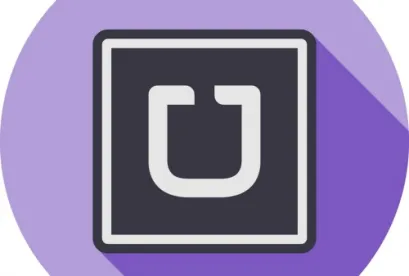The UK Supreme Court has decided that Uber drivers are “workers” for UK employment law purposes.
In reaching that decision, the Supreme Court unanimously upheld the decision of the original Employment Tribunal and agreed with the decisions of the Employment Appeal Tribunal and Court of Appeal.
This judgment confirms that the Uber drivers in the United Kingdom are entitled to core entitlements such as paid holiday and the national minimum wage.
What Is the Issue?
In the United Kingdom, there are three categories of employment status: employees, workers and self-employed contractors. Each category has varying levels of protection under employment law. Employees have the most protection, contractors have the least, and workers sit in the middle. Workers are entitled to core rights such as paid holidays, rest breaks and the national minimum wage. Contractors are not entitled to any of these core rights.
A “worker” is a person who works under either:
-
a contract of employment (i.e. a traditional employee); or
-
any other form of contract (whether implied or expressed, orally or in writing) under which:
a) they undertake to perform work personally for another party; and
b) the other party is not a client or customer of any profession or business undertaking carried on by the individual.
Uber’s appeal to the Supreme Court focused on one particular point in relation to the second limb of this test: whether the individual drivers worked under a contract to provide services to Uber. Uber said they did not and so were self-employed contractors. The drivers argued that they did and were workers.
Uber’s key argument to the Supreme Court was that, in reaching their decisions, the lower courts had not paid enough attention to how the relationship between Uber and the drivers was described in the relevant written agreements.
In summary, Uber said that the written agreements provide that the role of Uber BV is to provide technology services and act as a payment collection agent for the driver, and that Uber London’s only role is to act as booking agent for the drivers.
The Supreme Court Decision
The Supreme Court did not agree with Uber on any of its points. Its findings included, in summary, that:
-
Contrary to Uber’s argument, the contractual documentation is not the “starting point” in determining whether an individual is a worker.
Given relative bargaining strengths, the employer has most of the influence over the contract drafting. It would be wrong for the employer to be able to dictate status through the drafting and so deprive the worker of protection. It has long been accepted that an Employment Tribunal should look beyond the written agreement where it is asserted that the agreement does not reflect the true nature of the relationship. However, the principle extends beyond arrangements that can be shown to be a “sham” and to deliberately misrepresent the nature of the relationship. There may be many reasons why a written agreement may not accurately reflect the individual’s status, including because circumstances have changed over time.
In order to ensure that employment legislation achieves its purpose of protecting vulnerable workers, an Employment Tribunal’s analysis needs to consider what actually happens in practice, and all other circumstances. The written contract (if one exists) is only one part of that analysis.
-
Applying that to the Uber drivers here, the Supreme Court found that the Employment Tribunal had been right to find that they were workers. Although the drivers were free to choose when and where they worked, five particular aspects of how the relationship between the drivers and Uber operated were significant:
a) Remuneration was effectively fixed by Uber, not the drivers.
b) The contractual terms were dictated by Uber.
c) Once logged into the Uber app, the driver’s choice around accepting requests was constrained by Uber.
d) Uber exercised significant control over the way in which drivers delivered the service.
e) Uber restricted communication between the passenger and driver to the minimum necessary to perform the trip.
The Supreme Court also confirmed the Employment Tribunal’s decision regarding what constituted working time for the drivers. This was the time that the driver was logged into the Uber app within the territory in which the driver was licensed to operate and was ready and willing to accept trips, contrary to Uber’s argument that only time spent driving passengers to their destination constituted working time.
What Does This Mean for Employers?
It is important to note that this decision does not materially change the existing law.
The case is certainly high profile, but it largely confirms a direction of travel that we have seen develop over recent years: individuals engaged in the gig economy may well be workers. But, they will not automatically be considered so. It will depend on the factual reality of the relationship in each case.
As noted above, five separate factors formed the basis for the decision in the Uber case, none or only some of which may be present in other cases.
However, there are lessons to be learned for employers:
-
This decision is another reminder that categorising staff as self-employed contractors does not determine their status if, in practice, those “contractors” are treated as employees or workers.
An employer’s contracts may say that staff are self-employed contractors. However, if the reality of the situation is that staff are properly employees or workers, the contracts will not, on their own, prevent staff from being found to be employees or workers. Moreover, the Supreme Court’s judgment calls into question the validity of any terms which purport, directly or indirectly, to exclude or limit UK statutory employment protections.
-
Broadly speaking, the more control a business has over how a service is provided by someone it calls a contractor, the less likely it is that that someone is a contractor in practice.
If they haven’t done so already, employers with significant banks of staff who are engaged as independent contractors should take the opportunity to review the arrangements in practice. Is the contractual documentation in place reflective of the day-to-day practice? How much control do you retain in terms of how the service is performed? What do you do if work is offered to someone who decides not to take it? If some of the five factors identified in the Uber case sound familiar, action may be needed either to recognise the correct status or to reset how the relationship operates in practice.
Businesses engaging individuals via personal service companies will already be focused on undertaking a similar status determination exercise for the purposes of complying with the changes to the private sector (IR35) off-payroll working rules due to take effect from early April 2021.
There’s no doubt that treating an individual as a worker rather than as a self-employed contractor will cost more. Workers are entitled to national minimum wage, paid annual leave, rest breaks and, depending on the precise circumstances, potentially sick pay too.
Such potential obligations can be factored into operating costs going forward. However, the greater headache for employers who may be affected by these issues is probably in the consequences looking backward. A finding that an individual is a worker rather than a self-employed contractor will almost certainly find that that individual has been a worker for some time prior to the claim, perhaps since they were first engaged.
This means that they will be awarded compensation to put them in the position they should have been as a worker. In particular, this compensation may include backdated pay in order to meet the relevant minimum wage during that time (plus possible penalties) and backdated holiday pay. For a full-time contractor found to be a worker, holiday could amount to 28 days of pay for each year of “service”. Whilst there is a statutory two-year backdate limit (i.e., a claim cannot go back over a period of more than two years), it is possible that the legality of that limit could soon be challenged in the courts. The financial consequences could therefore be far-reaching.






 />i
/>i

